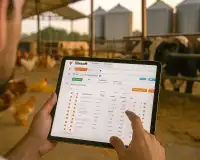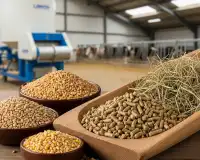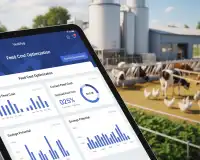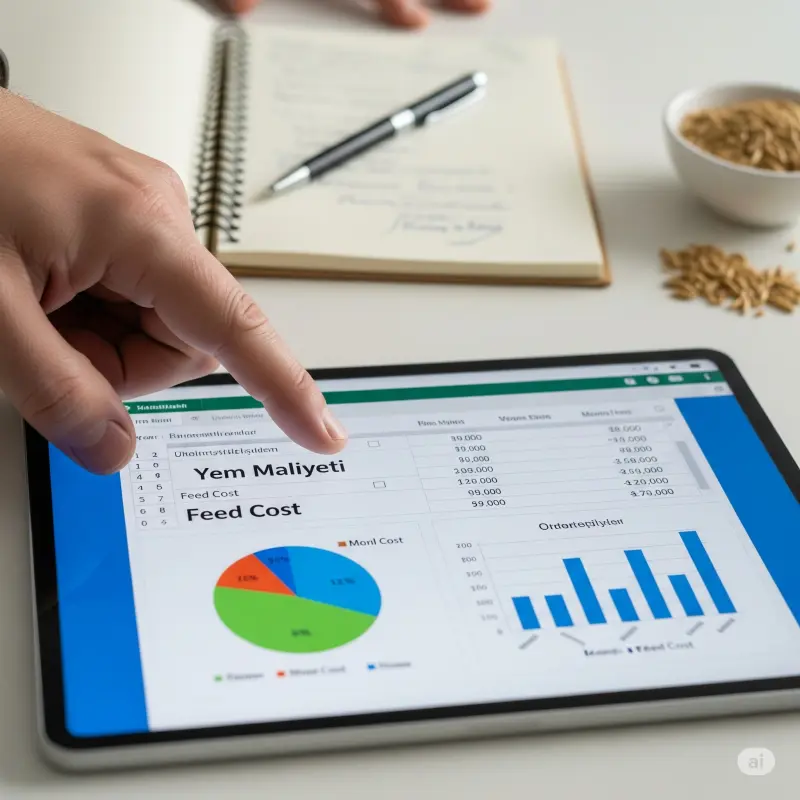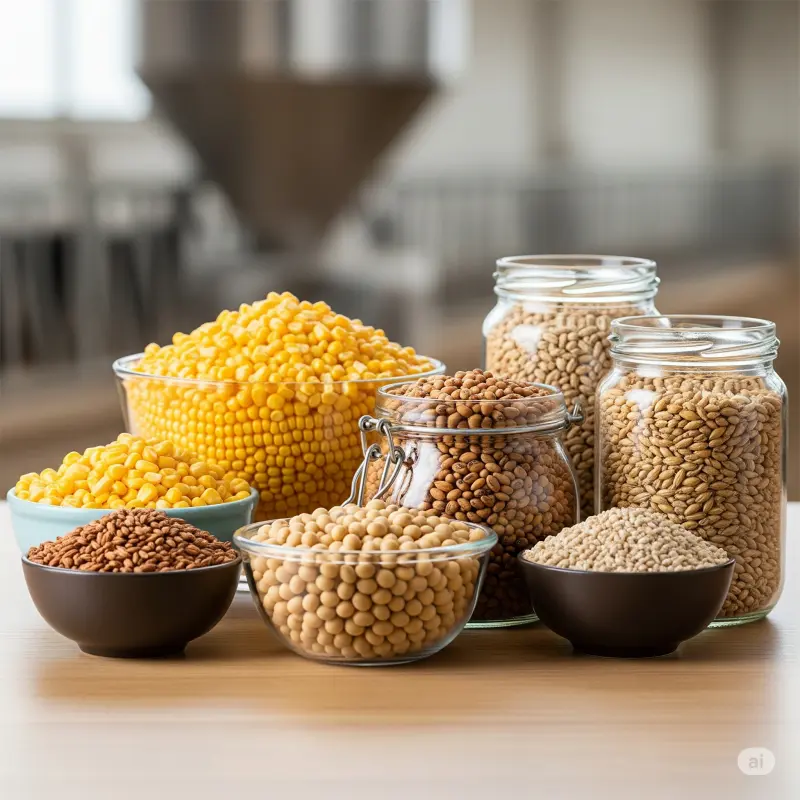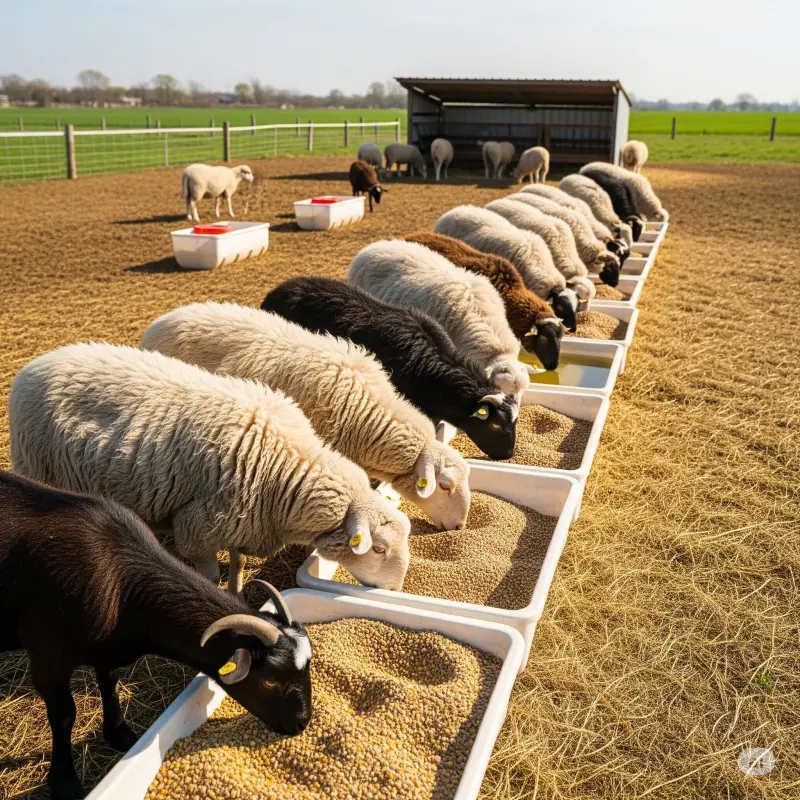What Are Feed Raw Materials for Beginners?
Get to know the feed raw materials that form the basis of animal nutrition! In this guide, discover the most commonly used feed materials and their functions, from energy and protein sources to roughages, vitamin, and mineral additives.
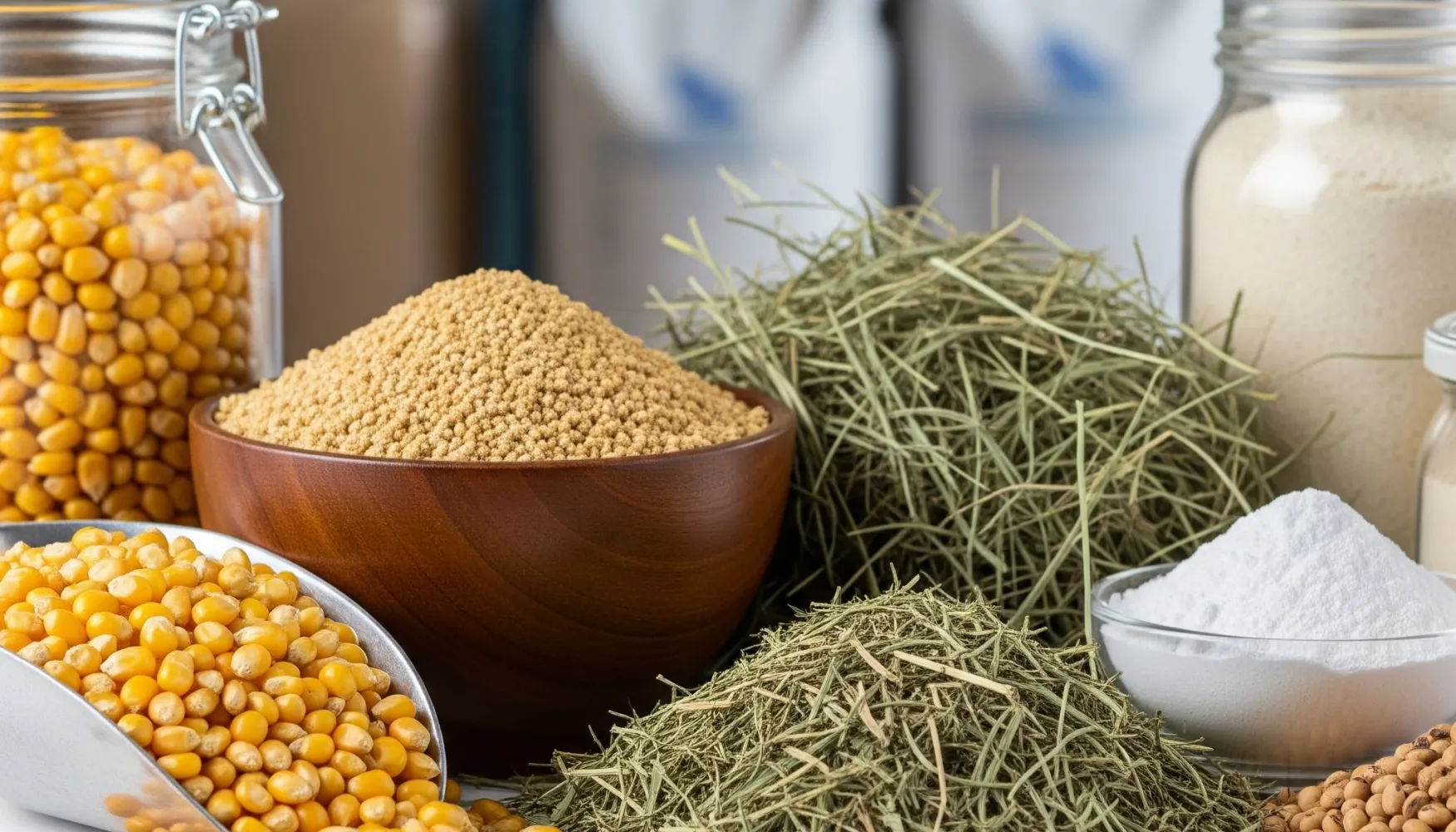
What is a Feed Raw Material?
**Feed raw material** is any natural or processed substance with nutritional value used in preparing animal rations. These can be of plant origin (grains, oilseed meals, grasses), animal origin (fish meal, meat-bone meal - use is restricted in Turkey), or mineral/vitamin origin (salt, limestone, premixes).
Classification and Functions of Feed Raw Materials:
Feed raw materials are generally grouped according to the main nutrients they contain. Each group has a different role in animal nutrition.
- Energy Sources (Grains and By-products):
Feeds in this group provide the energy necessary for animals to maintain body functions, grow, and produce meat, milk, eggs, and wool. They generally contain high levels of starch and/or fat.- **Corn:** The most important and common energy source. It has high digestibility. Suitable for all animal species.
- **Barley:** Contains slightly lower energy and higher fiber compared to corn. It is palatable and easily digestible. Frequently used in small and large ruminant rations.
- **Wheat:** Contains high energy but can cause digestive problems if used in excessive amounts or finely ground. Generally used more carefully.
- **Oats:** Contains higher fiber than other grains. A good energy source for young animals and breeding stock.
- **Rice Bran/Razmol:** A by-product obtained from rice processing. Contains energy and fiber.
- Protein Sources (Oilseed Meals and Others):
They provide the basic building blocks for the formation of body tissues (muscle, milk, wool, eggs), enzymes, and hormones. Protein requirements increase especially during growth, lactation, and reproduction periods.- **Soybean Meal:** The most valuable plant-based protein source. Widely used in all animal rations due to its high protein content and balanced amino acid profile.
- **Sunflower Meal:** Contains lower protein and higher fiber than soybean meal. Often used in combination with or as an alternative to soy.
- **Cottonseed Meal:** Provides protein and energy. However, due to its "gossypol" content, care should be taken when using it, especially in monogastric animals (poultry, pigs) and young ruminants.
- **Canola Meal:** A good alternative to soybean and sunflower meal. High in protein content.
- **Corn Gluten Meal:** A protein-rich by-product obtained after starch production from corn.
- **Dried Distillers Grains with Solubles (DDGS):** A by-product of bioethanol production. Rich in protein and energy.
- Roughages (Fiber Sources):
Indispensable, especially for ruminant animals (cattle, small ruminants), for the healthy functioning of the digestive system, regulation of rumen movements, and feeling of fullness. They constitute the bulky part of the ration.- **Dry Hay (Alfalfa, Meadow Grass, Vetch):** The most basic roughage. Quality hays also provide significant amounts of protein, vitamins, and minerals.
- **Straw (Wheat, Barley, Oat Straw):** Very high in fiber, but low in energy and protein. Used for rumen health and feeling of fullness.
- **Silage (Corn Silage, Vetch Silage):** Obtained by fermenting green fodder in an anaerobic environment. Provides high energy content, good digestibility, and palatability. Very common in cattle feeding.
- Mineral and Vitamin Additives (Premixes):
These are vital nutrients for animals' bone structure, immune system, metabolic activities, and general health, even in very small amounts. They are usually added to rations as special mixtures (premixes).- **Calcium Sources:** Limestone (Calcium carbonate), eggshell powder. Critical for bone, milk, and eggshell formation.
- **Phosphorus Sources:** Dicalcium phosphate (DCP). Important for bone health and metabolism together with calcium.
- **Salt (Sodium Chloride - NaCl):** Necessary for electrolyte balance, appetite, and digestion.
- **Special Premixes:** Mixtures specially prepared according to the animal's species (cattle, small ruminants, poultry), age, and production level, containing various vitamins (A, D, E, B group, etc.) and trace minerals (zinc, copper, selenium, iodine, iron, etc.).
- Other Additives:
Substances used to increase the digestibility, palatability of the ration, or prevent certain health problems.- **Molasses:** Provides energy, increases feed palatability, reduces dust, and is used as a binder in mixed feeds.
- **Yeast Cultures (Probiotics):** Supports rumen health, improves digestion, and increases feed utilization.
- **Toxin Binders:** Binds mycotoxins (mold toxins) in feed, preventing them from harming animals.
Considerations When Choosing Feed Raw Materials:
- Nutrient Value Analysis: Knowing the proportions of nutrients (protein, energy, fiber, etc.) contained in raw materials is very important. This information is usually obtained through laboratory analyses or reliable feeding tables.
- Quality and Freshness: Pay attention to ensure raw materials are not moldy, stale, infested with insects, or contaminated. Poor quality feeds severely negatively affect animal health.
- Storage Conditions: Store raw materials in dry, cool, airy places away from rodents.
- Cost-Effectiveness: Try to find the most economical combination while meeting nutritional needs. However, never compromise on quality.
- Animal Species and Physiological State: Remember that not every raw material is suitable for every animal species and every physiological state. For example, poultry rations differ from ruminant rations.
- Expert Support: Especially at the beginning, seeking help from a veterinarian or animal nutrition specialist will guide you in choosing the right feed raw materials and creating balanced rations.
Understanding and properly using feed raw materials is fundamental to successful and profitable animal husbandry. With this knowledge, you can take steps to provide the best nutrition for your animals.


